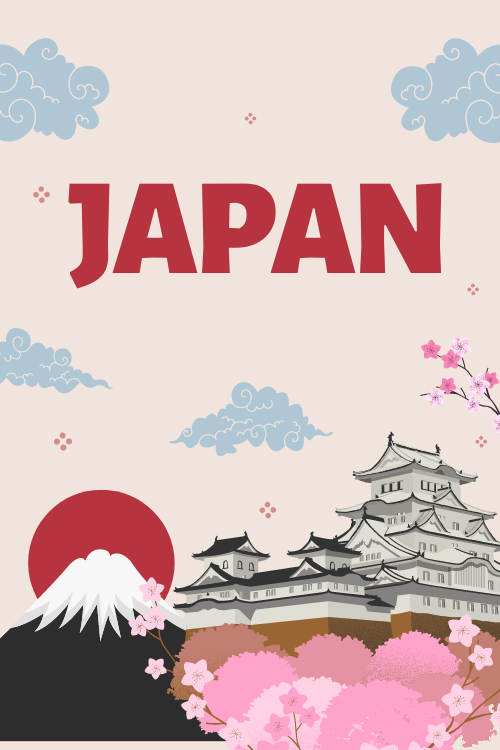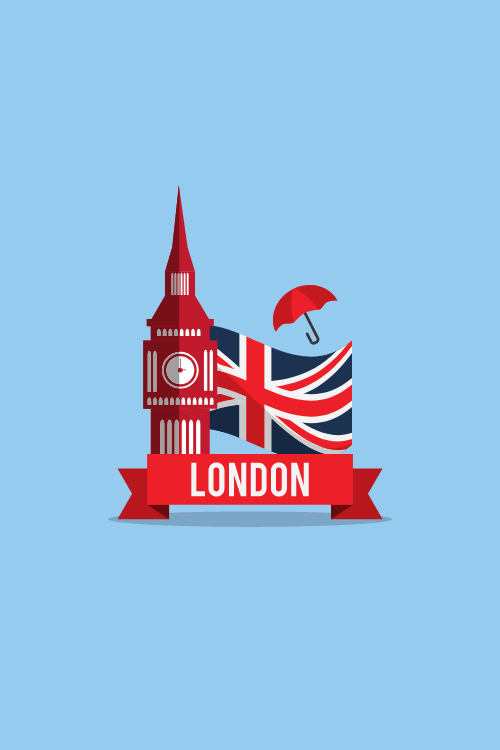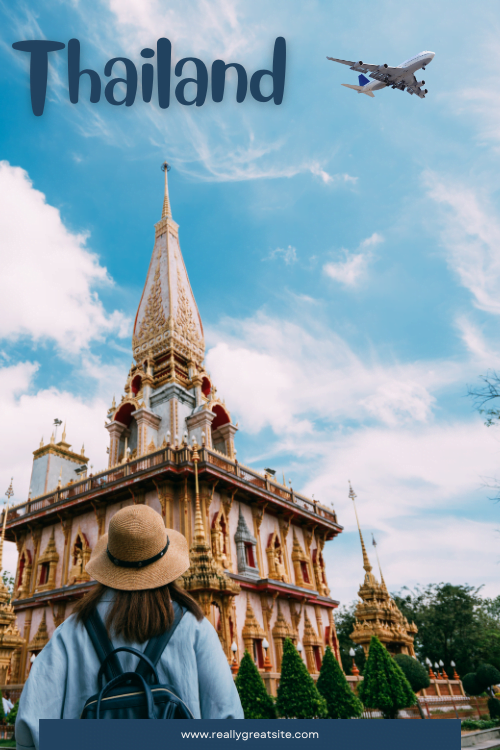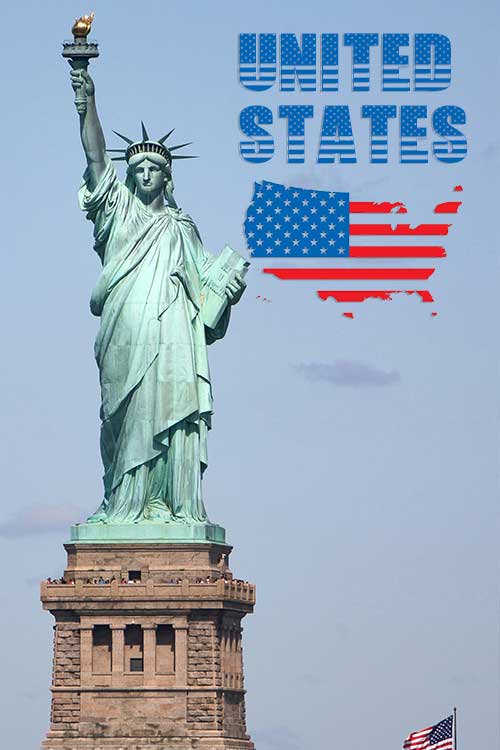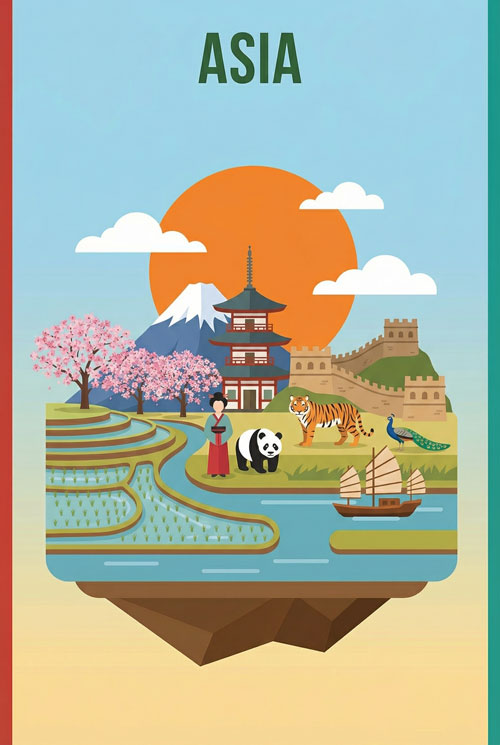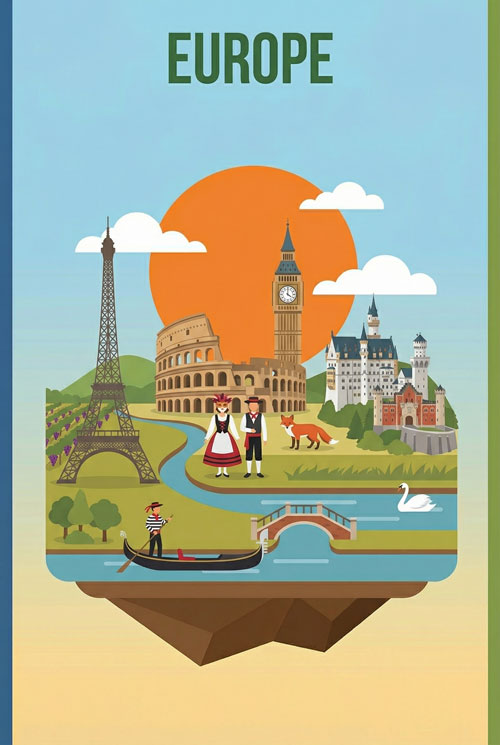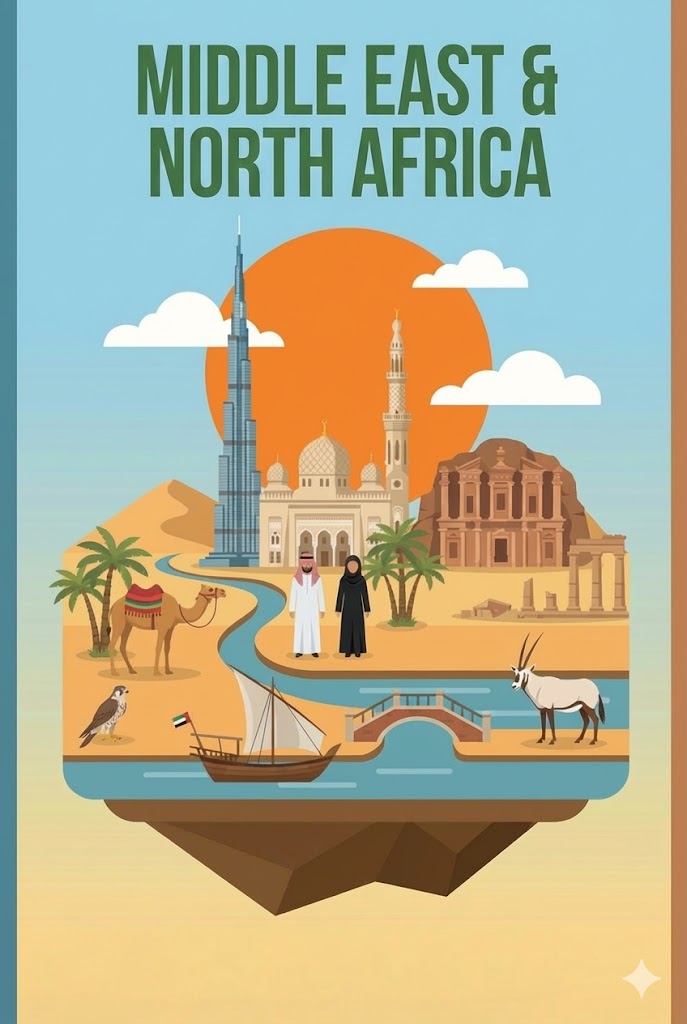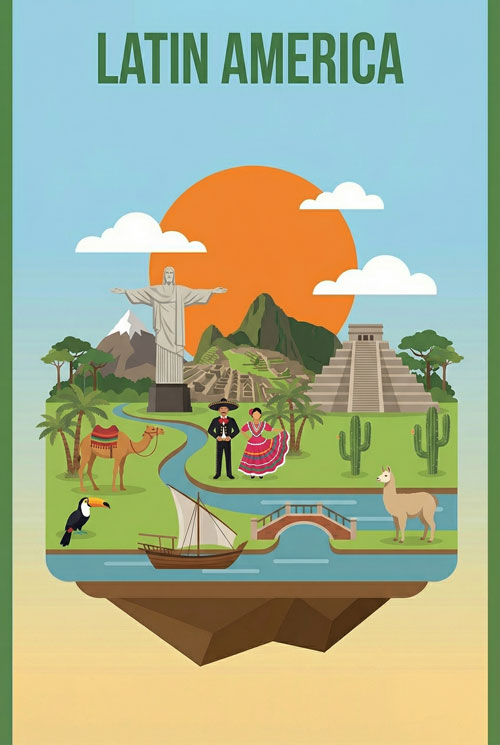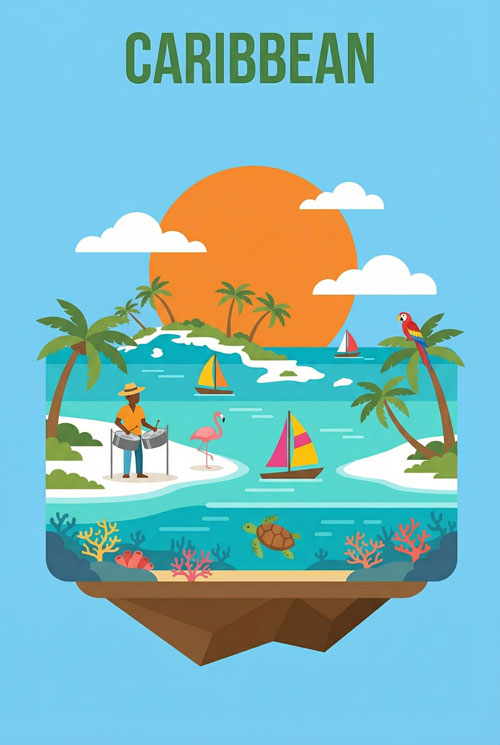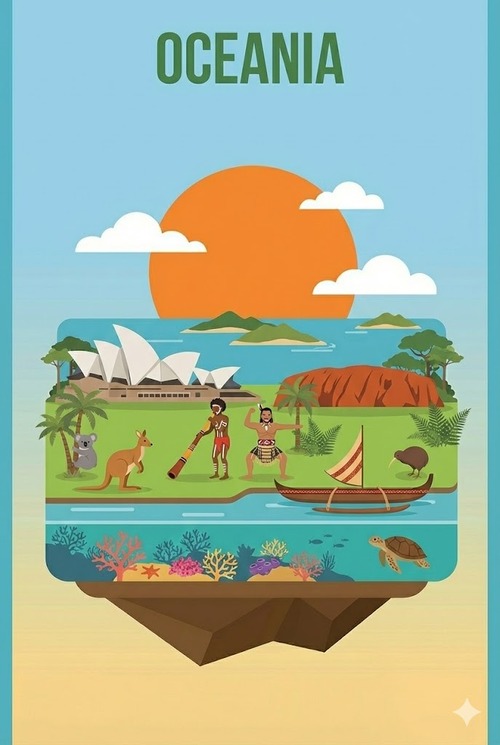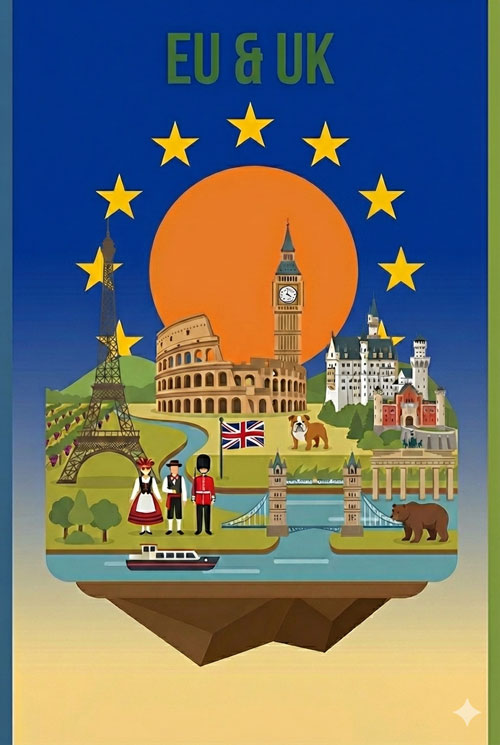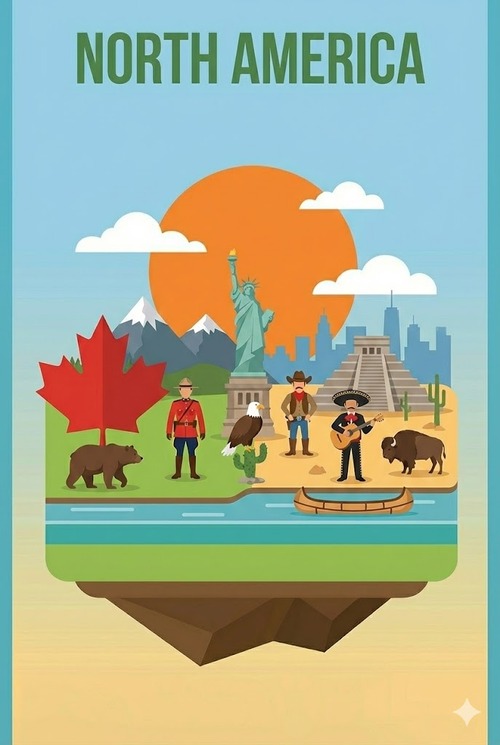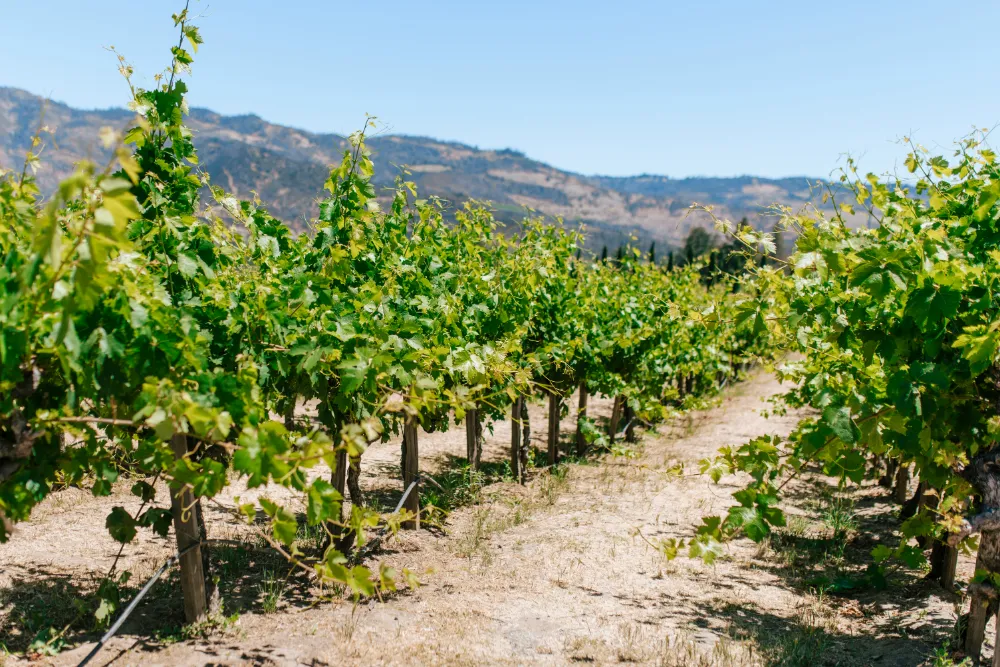eSIM USA
The Ultimate Guide: When Is the Best Time to Visit Napa Valley?
Napa Valley.
The name alone conjures images of sun-drenched vineyards, clinking glasses of world-class Cabernet Sauvignon, and Michelin-starred meals that linger in your memory long after the last bite.
This legendary strip of Northern California is more than just a wine region; it’s a full-sensory experience, a luxurious escape dedicated to the finer things in life. But to truly unlock its magic, timing is everything.
Choosing when to visit can transform your trip from good to unforgettable.
Whether you’re dreaming of the electric buzz of harvest season, the quiet romance of a winter retreat, or the sun-soaked ease of a summer holiday, Napa has a season tailored to your travel style.
This guide will cut through the fluff and give you the practical, on-the-ground advice you need to find the perfect window for your trip.
The Ultimate Guide to Napa Valley
Sun-drenched vineyards, world-class wine, and Michelin-starred meals. Timing is everything to unlock the magic of this legendary California escape. Find your perfect season.
A Quick Guide to Your Perfect Trip
Best Overall
September & October
Best for Weather
April, May, Sept, Oct
Best for Budget
November – March
Best for Crowds
January & February
Understanding Napa’s Seasons
Peak Season: Summer & Harvest
(Late May – October)
The valley at its most vibrant and in-demand. The weather is glorious, vineyards are lush, and the energy of the fall harvest is electric.
- Pro: Best weather and exciting harvest activities.
- Pro: All wineries and restaurants are buzzing.
- Con: Most expensive and crowded time.
- Con: Must book everything months in advance.
Shoulder Season: Spring
(March – Mid-May)
Napa awakens in a spectacular display of green hills and yellow mustard flowers. A time of renewal and beauty without the intense summer crowds.
- Pro: Gorgeous scenery and fewer people.
- Pro: More affordable than peak season.
- Con: Weather can be unpredictable with rain.
- Con: Some new wines may not be released yet.
Low Season: Winter
(November – February)
Known as “Cabernet Season.” A quiet, tranquil time for cozying up by a fire, enjoying rich red wines, and indulging in the culinary scene.
- Pro: Cheapest time to visit with the best deals.
- Pro: Intimate, personal tasting experiences.
- Con: Coolest and rainiest season.
- Con: Vines are bare; less lush scenery.
A Month-by-Month Guide to Napa Valley
| Month | Weather | Key Events & What to Expect |
|---|---|---|
| Jan | Cool, rainy (50s°F) | Low season, fewest crowds. Restaurant Week, Truffle Festival. |
| Feb | Cool, wet (50s°F) | Stunning mustard flower blooms across the valley. Still quiet. |
| Mar | Milder (60s°F) | Shoulder season begins. Bud break on vines. Great for cycling. |
| Apr | Pleasant, sunny (70s°F) | Fantastic weather, wildflowers, Arts in April. Ideal for outdoors. |
| May | Warm, sunny (mid-70s°F) | Lush vineyards. Crowds climb, especially around BottleRock Festival. |
| Jun | Hot, dry (80s°F) | Peak season arrives. Expect sun, crowds, and high prices. |
| Jul | Hottest month (90s°F) | Heart of summer. Very busy. Plan tastings for cooler parts of the day. |
| Aug | Hot (80s-90s°F) | Harvest (“Crush”) begins for white wines. Excitement builds. |
| Sep | Glorious (80s°F) | Arguably the best month. Peak harvest for reds. Busiest and priciest. |
| Oct | Mild, pleasant (70s°F) | Harvest winds down. Stunning fall foliage. Celebratory atmosphere. |
| Nov | Cooler (60s°F) | Transition to low season. Great deals after the first week. |
| Dec | Cool, rainy (50s°F) | Magical and quiet. Festive holiday lights without the crowds. |
The Best Time to Visit For…
Wine Tasting & Harvest
For harvest action, visit Aug-Oct. For intimate tastings, visit during “Cabernet Season” from Nov-Feb.
Hiking & Cycling
The best temperatures are in Spring (Mar-May) for green hills and Fall (Sep-Nov) for vineyard colors.
Hot Air Balloons
For calm winds and clear skies at sunrise, aim for Spring (Apr-May) or Fall (Oct).
Food & Spa Retreats
Year-round, but the low season (Nov-Mar) makes it easier to get reservations and enjoy a cozy spa day.
Practical Tips for Your Trip
-
Book Far in Advance: For peak season, book hotels, tours, and dinner 3-6 months out. Winery reservations are a must year-round.
-
Pace Yourself: Limit winery visits to 2-3 per day. Rushing ruins the experience. Savor the moment (and the wine!).
-
Hire a Driver: To taste safely and responsibly, hire a driver, join a tour, or use a ride-sharing app. Don’t drink and drive.
-
Pack in Layers: Napa’s temperature can swing 30-40 degrees from day to night. A sunny afternoon can become a chilly evening fast.
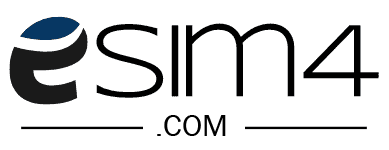
Stay Connected Instantly in Napa Valley
Don’t risk expensive roaming fees or waste time hunting for local SIMs. Get online the moment you land to navigate wine country, book rides, and share your California adventure.
Download a data plan before you go and activate it on arrival. Simple, fast, and reliable.
A Quick Guide to Your Perfect Napa Trip
- Best Overall: September & October
- Best for Good Weather: April, May, September, October
- Best for Budget Travelers: November – March
- Best for Avoiding Crowds: January & February
- Best for Wine Harvest: Late August – October
- Best for Cycling & Hiking: March – May & October – November
Understanding Napa Valley’s Seasons
Napa’s rhythm is dictated by the grapevine. The year is divided into three distinct travel seasons—Peak, Shoulder, and Low—each offering a vastly different experience in atmosphere, cost, and access.
Peak Season: Summer In Napa Valley (Late May – October)
This is Napa Valley at its most vibrant and in-demand.
The season kicks off with the warm, long days of summer and crescendos with the excitement of the fall harvest, when the entire valley is alive with the work of winemaking.
The weather is typically glorious, with hot, dry, and sunny days perfect for poolside lounging and al fresco dining.
Summer temperatures often settle in the 80s and 90s Fahrenheit, while the fall brings warm days and crisp, cool evenings. The primary advantage of visiting now is the energy.
Every winery, restaurant, and shop is buzzing, the vineyards are lush and full, and the fall harvest offers a fascinating glimpse into the winemaking process.
However, this vibrancy comes at a cost. This is the most expensive and crowded time to visit.
You’ll need to book accommodations, sought-after winery tours, and top-tier restaurant reservations months in advance.
The roads, particularly on weekends, can be congested, and the atmosphere at popular tasting rooms is lively but rarely intimate.
Average Costs: Highest. Expect to pay premium rates for flights, hotels, and tours.
Shoulder Season: Spring In Napa Valley (March – Mid-May)
As the winter rains subside, Napa Valley awakens in a spectacular display of green.
The shoulder season of spring is, for many seasoned visitors, the valley’s best-kept secret. It’s a time of renewal and beauty, without the intense crowds of summer.
The weather is wonderfully mild and pleasant, with temperatures typically ranging from the 60s to high 70s.
From February through March, the vineyards are carpeted in brilliant yellow mustard flowers, creating a stunning visual contrast against the dormant vines.
By April, the vines experience “bud break,” sprouting their first tender green leaves.
The pros are numerous: fewer people, more affordable prices than peak season, and gorgeous scenery. It’s the ideal time for outdoor activities like cycling and hiking before the summer heat arrives.
The main con is the weather’s unpredictability.
While often sunny and mild, spring can still bring rain showers and cooler days, so packing layers is essential. Some newer vintage wines may not have been released yet, but you’ll have better access to winemakers and staff.
Average Costs: Moderate. You can find good value, especially if you travel midweek.
Low Season: Winter In Napa Valley(November – February)
When the crowds depart and a quiet calm settles over the valley, Napa enters its most tranquil phase. Known locally as “Cabernet Season,” winter is a time for cozying up by a fireplace, enjoying rich, full-bodied red wines, and indulging in the region’s renowned culinary scene.
The weather is cooler, with daytime highs in the 50s and 60s, and this is considered the rainy season. However, rain showers are often interspersed with days of crisp, clear sunshine, and the hills turn a vibrant green.
The biggest pro is the value and intimacy. This is the cheapest time to visit, with the best hotel rates and deals to be found. You can often snag last-minute reservations at famous restaurants and enjoy tasting rooms all to yourself, allowing for longer, more personal conversations with the people pouring the wine.
The primary disadvantage is the weather. If you’re envisioning a sun-drenched trip, this isn’t it. Outdoor activities can be limited, and the vines are bare, lacking the lushness of other seasons. Still, for a romantic, food-focused getaway on a budget, it’s unbeatable.
Average Costs: Lowest. This is the prime time to find deals on luxury hotels and experiences.
A Month-by-Month Guide to Napa Valley
| Month | Weather | Key Events & Festivals | What to Expect |
|---|---|---|---|
| January | Cool and potentially rainy. Highs in the 50s. | Napa Valley Restaurant Week, Napa Truffle Festival, Lighted Art Festival. | Low season. Fewest crowds, best hotel deals. Cozy Cabernet Season is in full swing. |
| February | Cool, often the wettest month. Highs in the high 50s. | Mustard flowers begin to bloom spectacularly across the valley. | Still low season. A beautiful and quiet time to visit if you don’t mind a chance of rain. |
| March | Milder, less rain. Highs in the 60s. | Bud break begins. Mustard Celebration continues. Napa Valley Marathon. | Shoulder season starts. Crowds are still light. Perfect for cycling among the mustard fields. |
| April | Pleasant and often sunny. Highs in the high 60s/low 70s. | Arts in April. Wildflowers are abundant. | Fantastic weather without the peak season crowds. Ideal for all outdoor activities. |
| May | Warm and sunny. Highs in the mid-70s. Lush green vineyards. | BottleRock Music Festival (late May). | Crowds and prices begin to climb, especially around Memorial Day weekend. Book ahead. |
| June | Hot and dry. Highs in the 80s. | Festival Napa Valley (can start in June or July). | Peak season arrives. Expect sunshine, crowds, and high prices. Pools and outdoor patios are the place to be. |
| July | Hottest month. Highs can reach the 90s. Very dry. | Festival Napa Valley. | The heart of summer. Very busy. Stay hydrated and plan for early morning or late afternoon tastings. |
| August | Hot. Highs in the 80s/90s. The air buzzes with anticipation. | Harvest (“Crush”) begins for sparkling and white wine grapes. | Peak season continues. The excitement of the harvest starts to build. |
| September | Glorious weather. Warm days, cool evenings. Highs in the low 80s. | Peak of harvest for red wines. Calistoga Harvest Table. | Arguably the best month. Perfect weather, harvest action, and beautiful scenery. Also the busiest and priciest. |
| October | Mild and pleasant. Highs in the 70s. Beautiful fall foliage. | Harvest winds down. Many winery harvest parties. | Still peak season, but the energy is celebratory. The valley is painted in stunning autumn colors. |
| November | Cooler. Highs in the 60s. Crowds dissipate after the first week. | Napa Valley Film Festival. Cabernet Season kicks off. | The transition to the low season. A great time for deals and a more relaxed pace. |
| December | Cool, chance of rain. Highs in the 50s. | Festive holiday decorations and events at wineries and towns. | Low season. A magical, quiet time to visit. Enjoy the holiday lights without the crowds. |
The Best Time to Visit For…
Your perfect Napa trip depends on what you want to do. Here’s a breakdown for specific interests.
Napa Valley Wine Tasting & Harvest Excitement
Known for amazing wine tastings, Napa Valley is definitely one of those bucket list spots if you’re a wine lover who wants to be in the thick of the action. You can’t beat the grape harvest season from late August through October.
The valley is electric with the sights and smells of winemaking. You can see grapes being picked and crushed, and many wineries host special harvest parties and tours. Be warned: this is peak time, so book everything far in advance and expect crowds.
For a more relaxed and personal tasting experience, aim for the shoulder season of March to May. The wineries are less crowded, allowing for more dedicated attention from the staff. For the ultimate cozy, intimate experience focused on Napa’s signature grape, visit during “Cabernet Season” from November to February. You’ll have tasting rooms to yourself and get to sample new releases by a roaring fire.
Hiking and Cycling
The best times for hitting the trails are spring (March-May) and fall (September-November). During these months, the temperatures are ideal for outdoor exertion—not too hot, not too cold.
Spring offers lush green hills and vibrant wildflowers, while fall provides the stunning backdrop of vineyards ablaze in red, orange, and gold. The popular Napa Valley Vine Trail is a fantastic, mostly flat option for a leisurely ride any time of year.
Hot Air Balloon Rides
To soar above the vineyards in a hot air balloon, timing is critical for safety and scenery. The best conditions are found during spring (April-May) and fall (October).
These months offer the most reliable combination of calm winds, clear skies, and mild temperatures at sunrise, which is when all flights launch.
A spring ride gives you a view of the green, blooming valley, while a fall trip showcases the patchwork of autumn colors.
Culinary Experiences & Spa Retreats
Napa is a food and wellness destination year-round, but the low season (November-March) offers a distinct advantage.
It’s far easier to secure reservations at coveted Michelin-starred restaurants like The French Laundry. Furthermore, Napa Valley Restaurant Week in January offers special prix-fixe menus at a fraction of the usual cost.
For spas, the cool weather of winter makes a hot spring soak or a Calistoga mud bath feel even more luxurious and restorative.
A Regional Guide to Napa’s Towns
While Napa Valley is a compact 30 miles long, its different towns and microclimates offer unique vibes that change with the seasons.
- Calistoga & St. Helena (Up-Valley): Located at the northern end, this area is generally hotter in the summer and cooler in the winter. Winter is a prime time for Calistoga, with its world-famous hot springs and mud baths providing a perfect antidote to the chilly air. Fall is stunning here, but also incredibly busy.
- Yountville & Rutherford (Mid-Valley): This is the culinary and Cabernet heartland of Napa. It is exceptionally busy during the peak season from May to October. Visiting in the shoulder or low seasons gives you a better chance to experience its famous restaurants and iconic wineries with a bit more breathing room.
- Downtown Napa & Carneros (Down-Valley): The southern end of the valley, cooled by breezes from the San Pablo Bay, has more moderate temperatures. Its summers are slightly less scorching, making it a good base during the hotter months. The vibrant downtown Napa riverfront is a hub of activity year-round, but feels less congested than up-valley towns during the peak harvest crush.
What is the Cheapest Time to Visit Napa Valley?
The most budget-friendly time to visit Napa Valley is hands-down the low season, from November through March. January and February are typically the absolute cheapest months.
After the harvest frenzy, demand plummets, and hotels and wineries offer significant discounts to attract visitors. You can find luxury accommodations for a fraction of their peak-season price, especially for midweek stays.
To maximize savings, book your trip for mid-week in the winter and keep an eye out for package deals and special events like Napa Valley Restaurant Week.
What is the Worst Time to Visit Napa Valley?
“Worst” is subjective, as it entirely depends on your priorities.
If you hate crowds and high prices, the absolute worst time to visit is on a weekend during harvest season, specifically from mid-September to late October.
The combination of perfect weather and harvest excitement creates a perfect storm of traffic, packed tasting rooms, and sky-high rates.
If your top priority is sunny, warm weather for outdoor activities, the worst time would be January and February.
While you’ll get great deals, these are the coldest and rainiest months, which could put a damper on plans for cycling or vineyard picnics.
Finally, if you are risk-averse, be aware that late summer and early fall (August-October) is peak wildfire season in California.
While the valley is usually safe, smoke from nearby fires can occasionally impact air quality.
Practical Tips for Planning Your Trip
- Book Far in Advance. This is the golden rule of Napa. For visits during peak or shoulder seasons (May-October), book flights, hotels, and dinner reservations at top restaurants at least 3-6 months out. Most winery tastings now require advance reservations year-round.
- Pack in Layers. Napa Valley has a significant diurnal temperature swing, meaning there can be a 30-40 degree difference between daytime highs and nighttime lows. A sunny, 85-degree afternoon can quickly turn into a chilly 50-degree evening. Layers are your best friend, no matter the season.
- Don’t Drive, If You Can Help It. The best way to enjoy a day of wine tasting is to let someone else do the driving. Hire a private driver, join a small group tour, or use a ride-sharing app (though be aware service can be spotty up-valley). This ensures you can taste safely and responsibly.
- Pace Yourself. It’s tempting to cram as much as possible into a day, but you’ll have a much better time if you limit yourself to two, or at most three, winery visits per day. This gives you time to relax, savor the experience, and learn about the wine without feeling rushed.
- Explore Sonoma County. Napa’s neighbor to the west, Sonoma County, offers a more laid-back, rustic vibe with equally fantastic wines, often at a lower price point. Consider splitting your trip between the two regions to experience the best of California wine country.
